PGA Tour Clubhead Lag Part 1
- by Kelvin Miyahira
Lag is often misunderstood, mis-characterized and measured at the wrong place. Due to this, the simple act of allowing the club to lag behind the hands is very difficult except for the best players. But even my statement that it is a “simple act” is totally mistaken. This is another very complex subject and requires some deep analysis in order to understand then have the ability to perform. So this month, I’ll start with showing a small sampling of the PGA tour pros to give us an idea of what lag is in quantifiable terms. Then next month I’ll finish this subject with qualitative biomechanics and the intricate movements involved in retaining lag. Once the movements are laid out, it will certainly explain why lag is so hard to retain and give you some compelling reasons why the effort to work on your lag will be fruitful.
PGA Tour Lag Numbers
This investigation involved exploration of the concept of lag and make an attempt to quantify the differences between tour players.
Methodology
Measurements were taken at three different positions; left hand level with the shoulder, left arm at 45 degrees to the vertical and clubshaft at horizontal. Impact positions were also noted to show the correlation with holding lag.
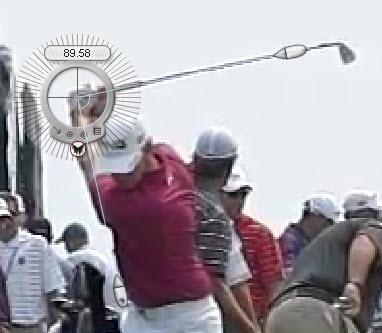
Top of the backswing
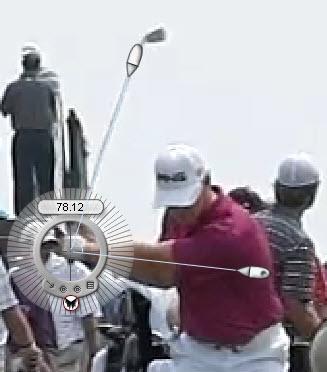
Left hand level with the left shoulder
This position is used because not everyone’s left arm is straight. There are varying degrees of bend to the left arm therefore the left hand being level with the left shoulder is the logical choice. Also the lines are drawn from the left ring finger metacarpophalangeal joint to the left olecranon (bony part of elbow that sticks out).
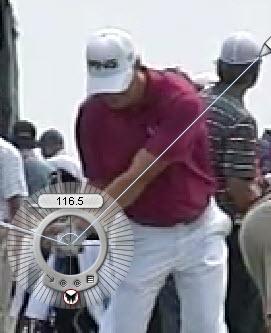
Left arm at 45 degrees to vertical
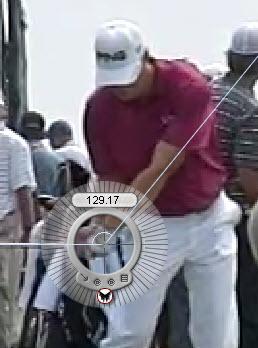
Shaft at horizontal
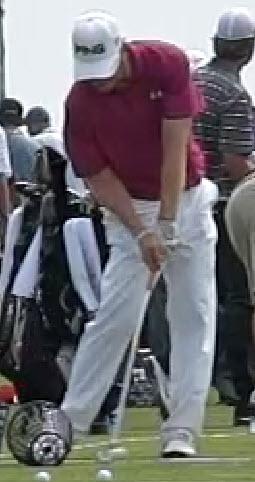
Impact
2D Distortion via Viewpoint Height
First, there are some 2D video problems. Seeing the change in lag from the top of the backswing position to where the left arm is parallel to the ground presents some obvious 2D distortions if we are shooting video from different heights.
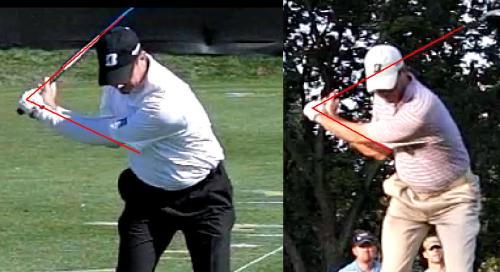
Here are two different shots of Matt Kuchar hitting a driver. One is from at least 10’ above ground while sitting on bleachers looking slightly down at him while the other is from ground view while he was hitting on an elevated tee box (roughly 3’ higher) looking up.
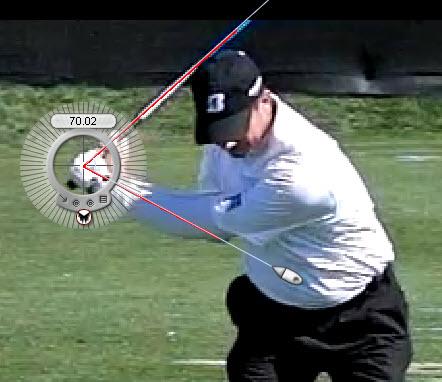
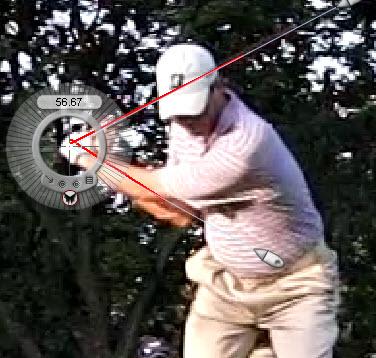
Notice how the viewpoint angle changes the lag angle by about 14 degrees! Thus, having the correct angle to view this is important. And the higher up your viewpoint the more accurate the actual lag number will be (the part of the swing you’re looking at must be moving as close to perpendicular to the camera lens for the least amount of distortion).
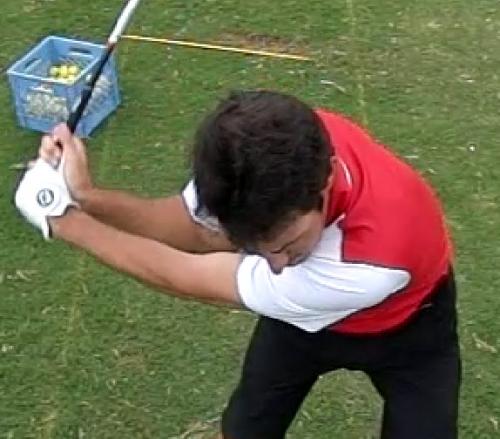
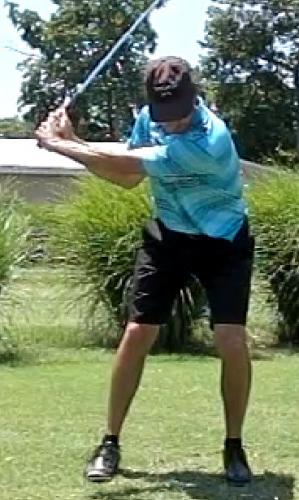
If you really want to know your lag at this point, this is the angle you need to see it from…..atop a 12’ ladder looking down. Can you see how much smaller the angle appears from ground level? The difference between the real (89 degrees) and distorted (65 degrees) is 24 degrees.
Another 2D Distortion
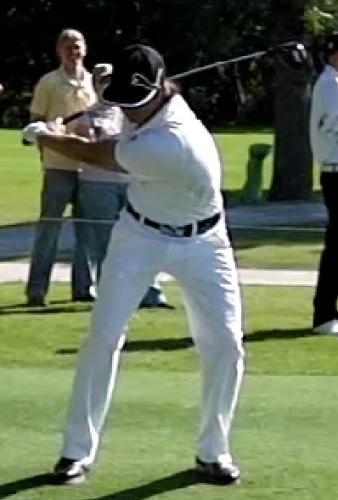
Just looking at Rickie Fowler from the front and at ground level, it looks like he’s got massive lag like Ben Hogan. The shaft looks like it’s hitting his right shoulder. But is this 2D distortion?
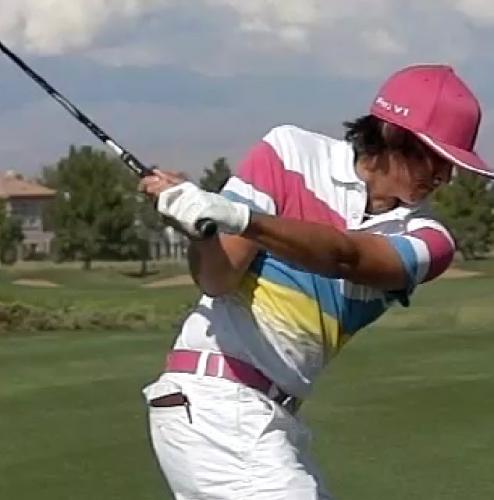
Look at this same position from target view. The club is nowhere near his right shoulder. Also it appears like there’s not anywhere near the amount of lag we’ve seen from the front view. What’s going on?
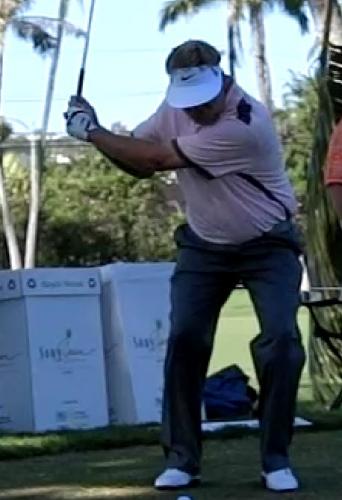
Perhaps this will help unravel the mystery. Here’s Carl Pettersen with what looks like he’s releasing early.
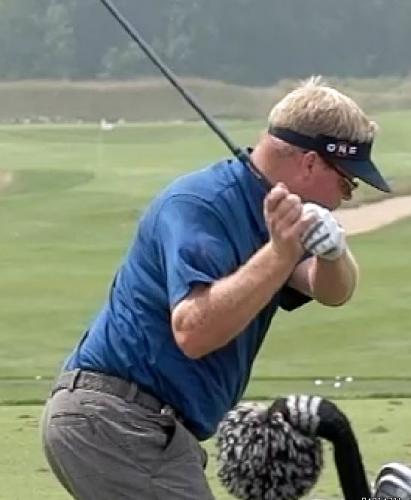
Here he is from target view with a steep downswing plane and his left arm parallel to the target line (Rickie’s left arm was way deeper or more behind him). The angle of the plane is causing less distortion therefore we’re seeing closer what the true lag angle is. Flat shaft angles with the hands deep (farther behind the body) appear to have a huge amount of lag whereas a steep swing with the hands in front seem to have a lot less lag. Thus, trying to judge the lag of this position of the swing is impossible without having the proper perspective. And since we won’t be climbing ladders in front of tour pros to get this proper camera angle we should forget looking at anyone’s lag at this point...
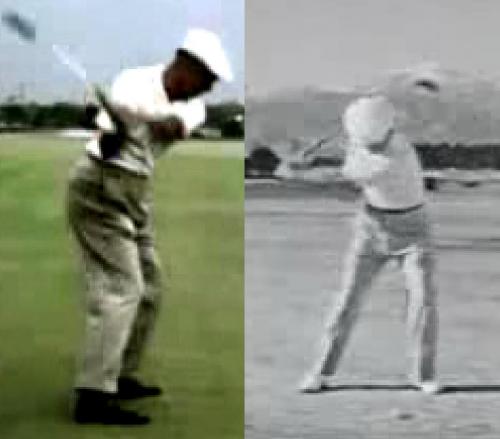
Even the Ben Hogan’s lag should be understood within this context. It really wasn’t as much as it appeared to be.
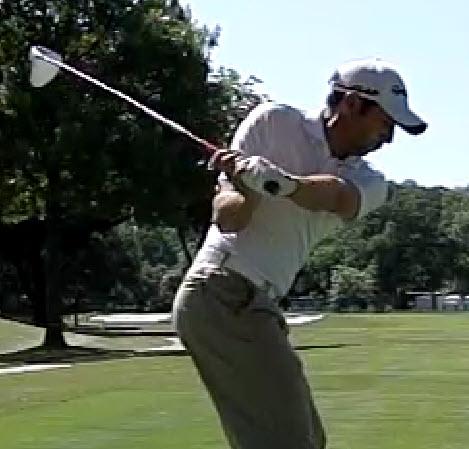
And Sergio.

And if Rickie really has so much lag, why does he lose it before impact? And if Pettersen was casting early in the downswing, how did he reach impact with this much shaft lean? It’s all an optical illusion.
Left Forearm at 45 degrees to Vertical (LF45) and Shaft at Horizontal (SH)
Due to the decreased distortion as the shaft moves more perpendicular to the lens, the position of the club when the arm is at 45 degrees to vertical (LF45) is much better to analyze as well as the position when the shaft is horizontal (SH). Also there’s far less variability (for professionals) in terms of plane than when the hands are at shoulder height. Those without professional training might still vary enough in plane and angle of the left arm to create some distortions. Despite this, there is still enough variation between players to draw conclusions and learn from this. So let’s take a look at these angles of these two positions with different players to see what they look like. First, will be Rickie, then Steve Stricker and last Camilo Villegas.
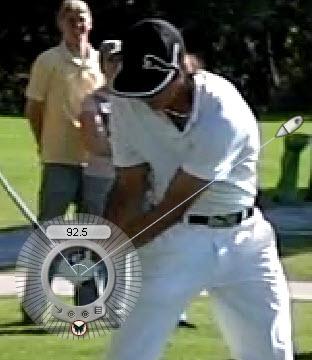
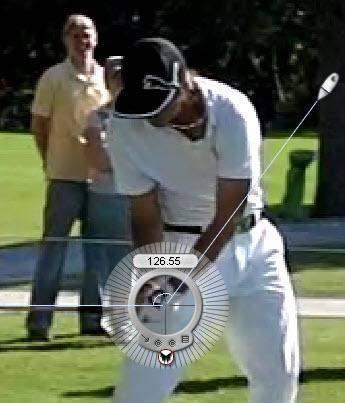
As you can see, by the time the shaft is at horizontal, he’s losing his lag and we know what he looks like at impact.
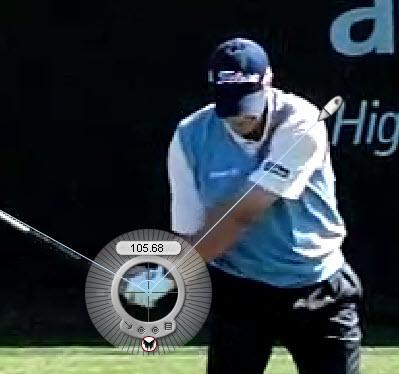

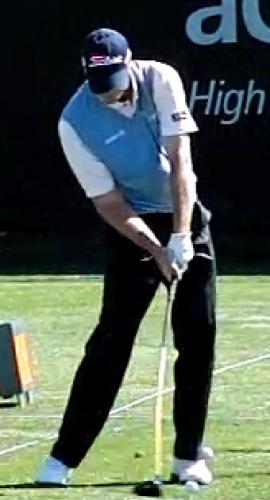
Steve Stricker has moderate lag. He has 110 degrees at LF45 and 120 degrees at SH. While he may have had less lag than Rickie at LF45, he has retained more when at SH. Thus he has a better impact position than Rickie.
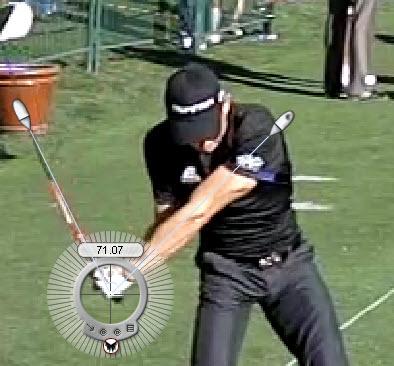
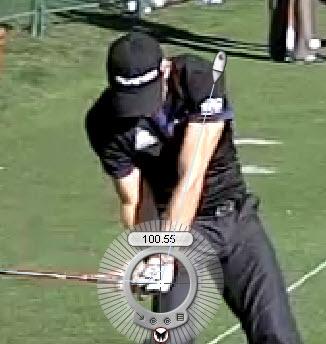
Camilo has extreme lag. He has 71 degrees of lag at LF45 and 100 degrees at SH.

These three players show the wide variation between tour pros. If you looked at amateur lag angles, there would be an even larger spread. Many amateurs do not even have Rickie’s lag angle.
So is there a correlation between lag angle and impact position? Certainly the answer is yes but there are cases where this is not true especially with amateurs. The mechanisms and muscle movements that hold lag are different than those that create a better impact position. But clearly, when it comes to lag, the more the merrier. Increased body rotational speed can be expected if there is more lag due to having less mass (arms and club) farther away from the rotational center of the body. Also, your max swing speed will be closer to impact than if you release it too early, you could have your max speed a foot or more prior to contact. And of course, if you’re hitting it with the club passing your hands, you’ve probably added a bunch of loft and spin to your shot not to mention the increased chance of hitting fat shots.
The Numbers Game
The main position to look is at SH. If you’re holding 110 degrees or less, you are virtually insured against a flip. On the other hand, if you are near 130 degrees or higher, chances are you will flip it. Most of the tour pros are in between 110 and 120 degrees of lag angle at this point so this should be the target zone.
But if there is a problem with not enough lag, the position at LF45 is where to find the errors. This is where most players are beginning to release a bit too early. So let’s just take a look at some of the extreme laggers. Then we’ll take a look at the early releasers and see how this relates to impact positions. I’ll skip looking at the average PGA tour laggers since you can assume they will look somewhere between these two extremes.
Extreme Laggers
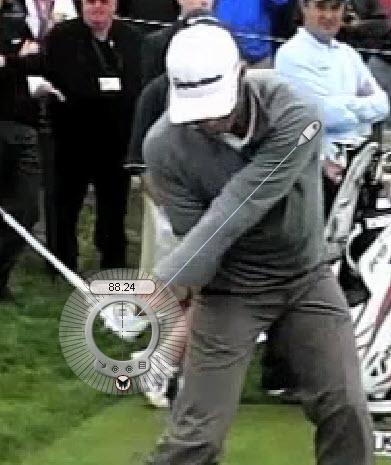
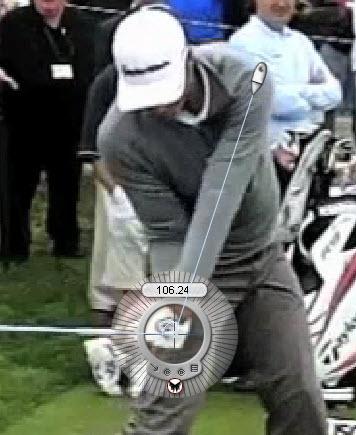
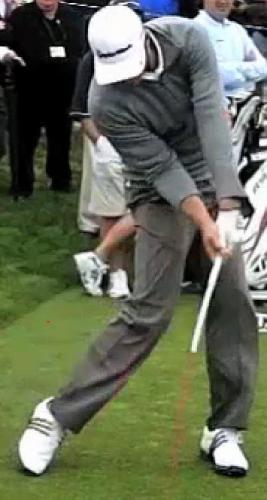
Dustin Johnson
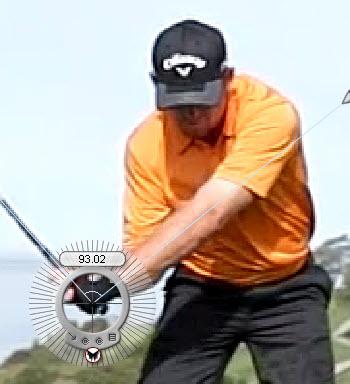
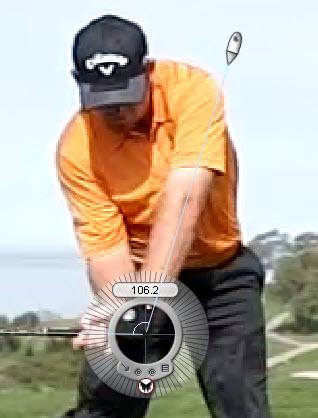

JB Holmes
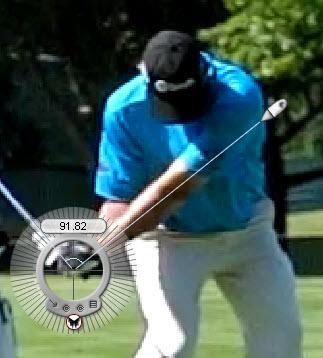


Tommy Gainey
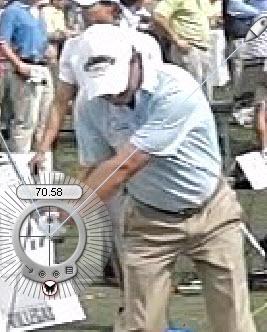
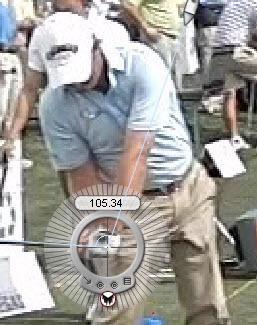
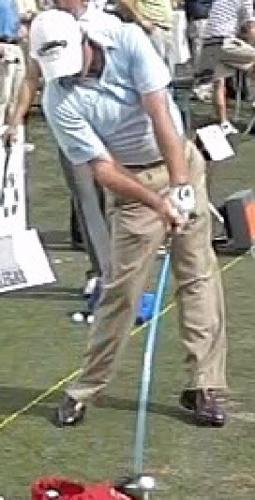
Graeme McDowell
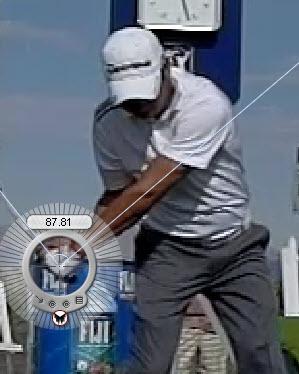
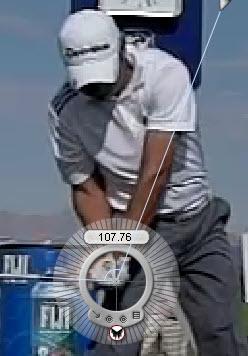

Andres Romero
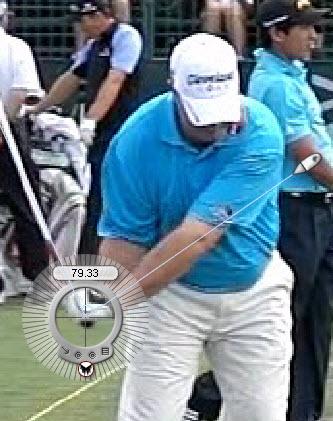
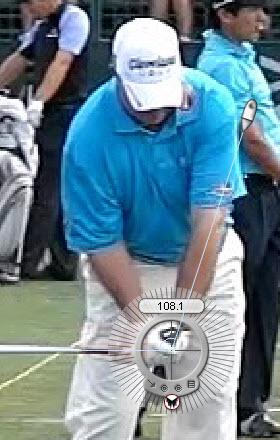
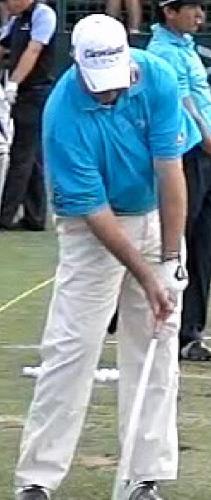
Boo Weekley
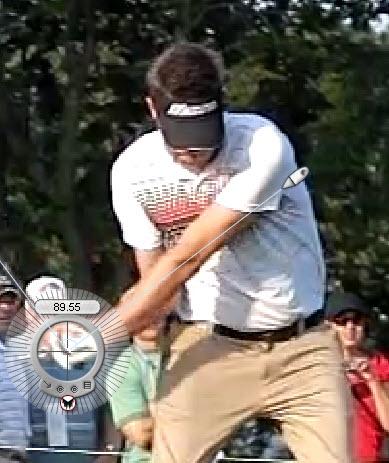
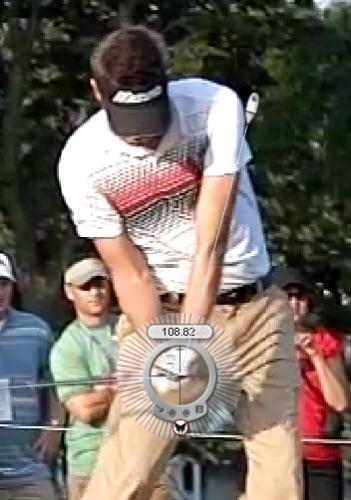
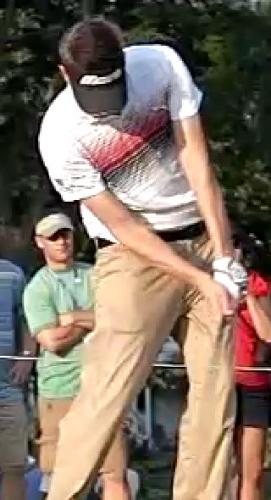
Jeff Overton
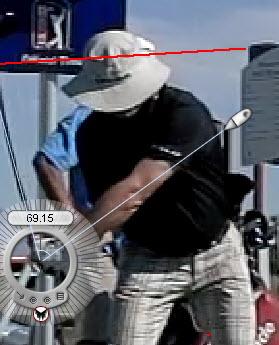
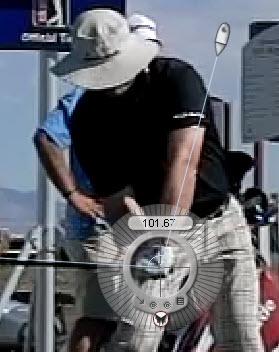
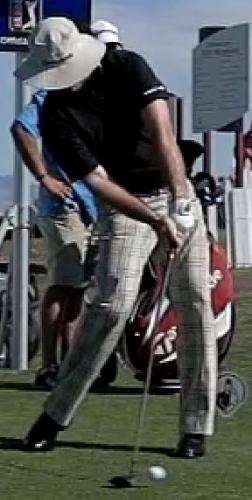
Rory Sabbatini
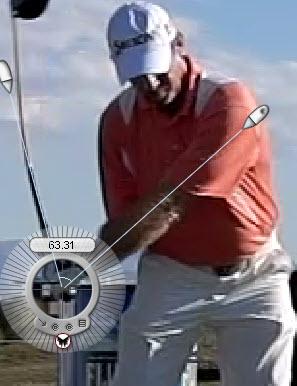
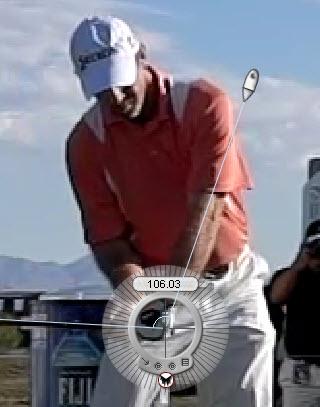
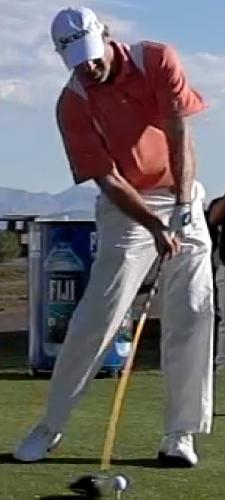
Rod Pampling
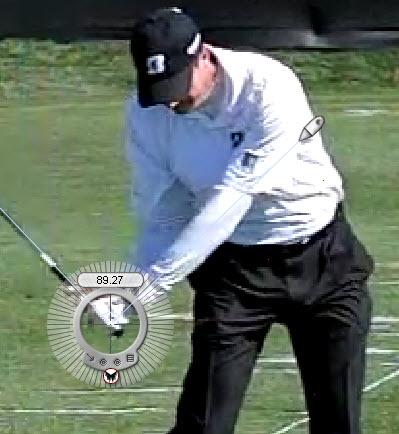
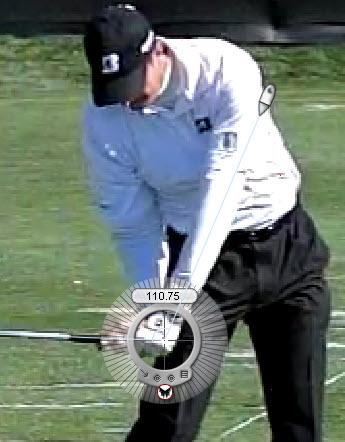
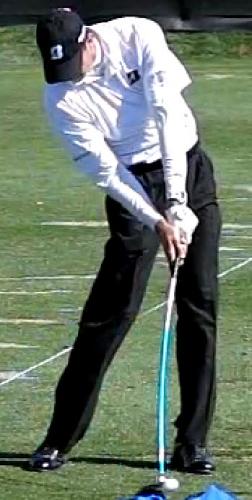
Matt Kuchar
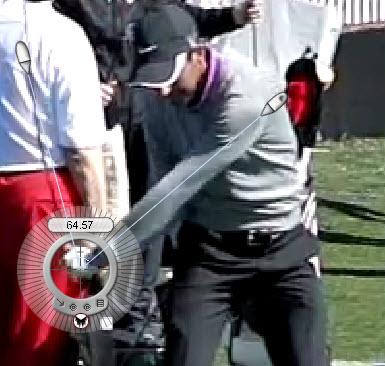
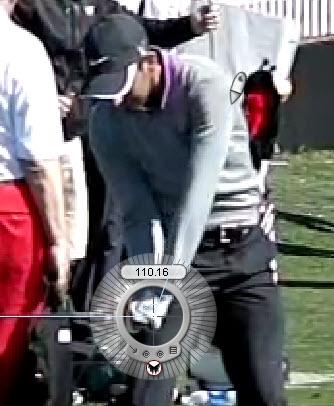
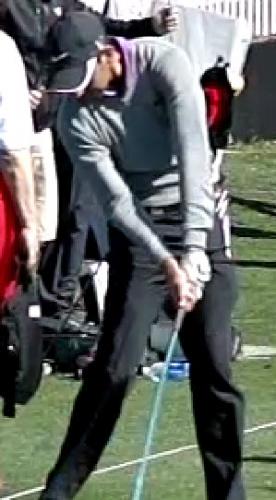
Charl Schwartzel
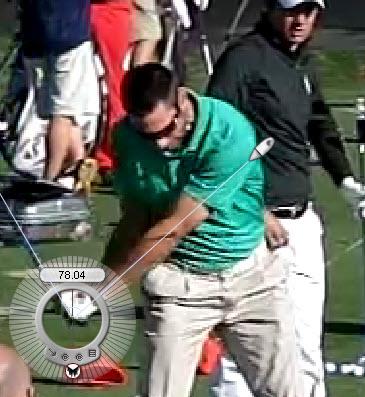
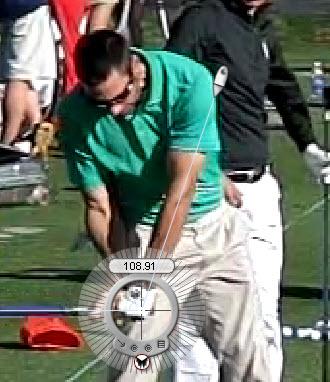
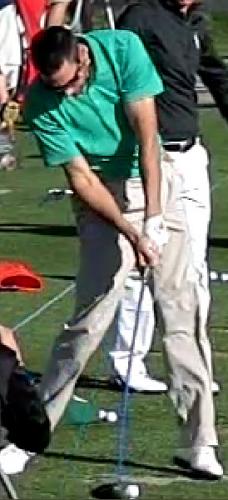
Alvaro Quiros
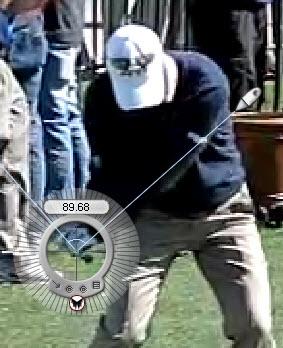
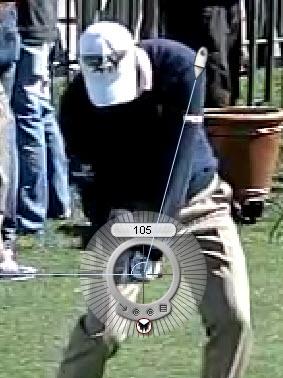
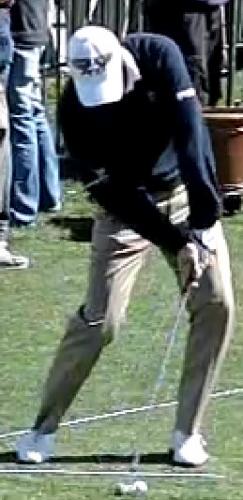
Ryan Palmer

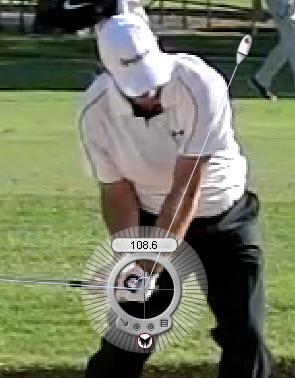
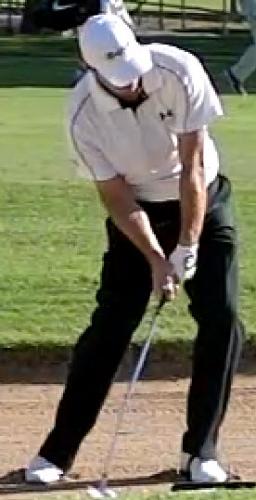
Gary Woodland
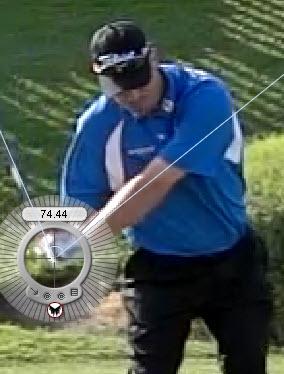

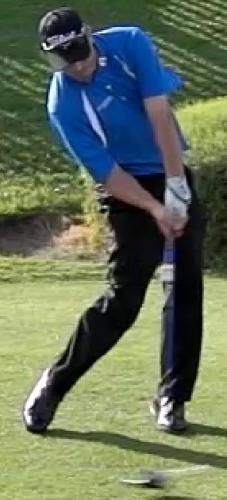
Brett Wetterich
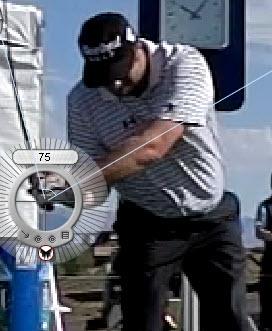

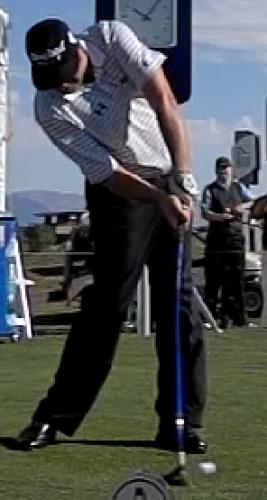
Steve Marino
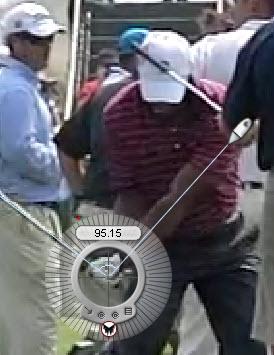
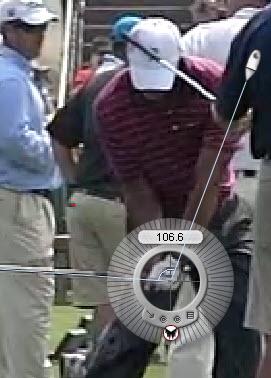
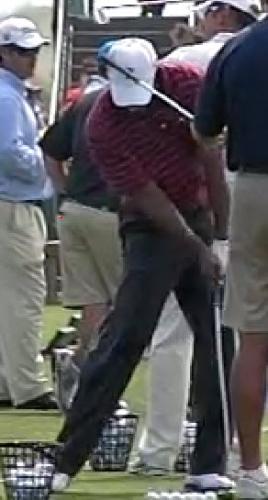
Tiger Woods
The average lag angle at LF45 is about 81 degrees for the extreme laggers. Can you see how they are some of the longer hitters on tour?
Early Releasers of Lag
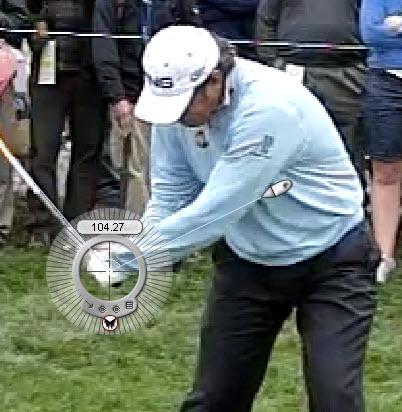
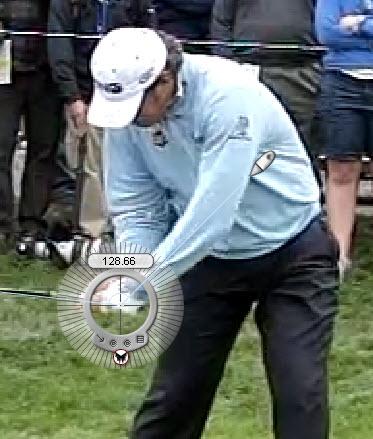
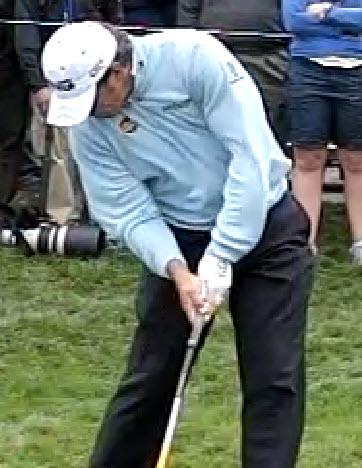
Lee Westwood
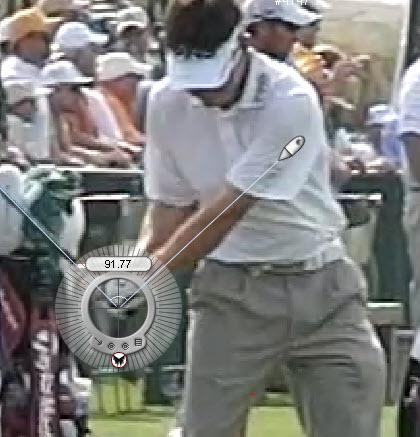
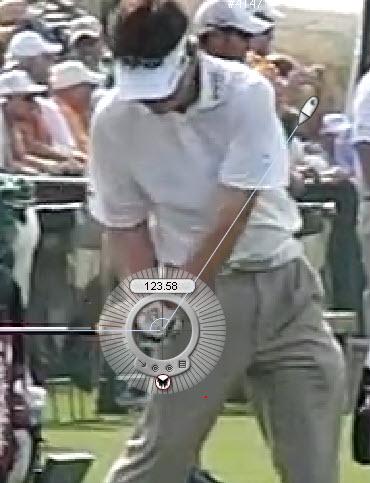
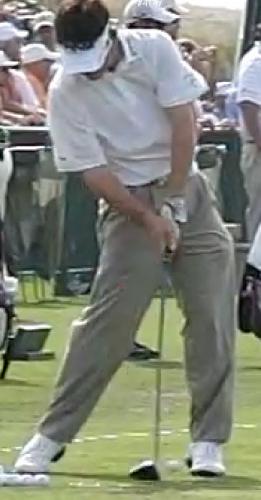
Louie Oosthuizen
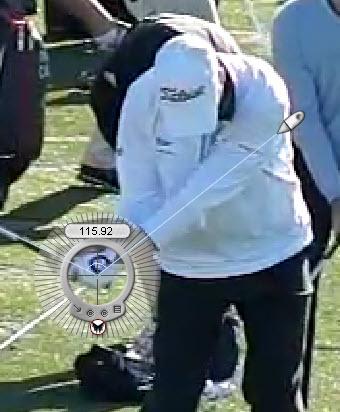
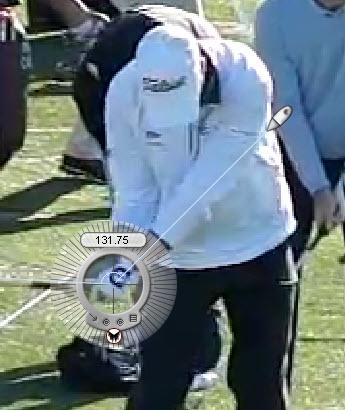
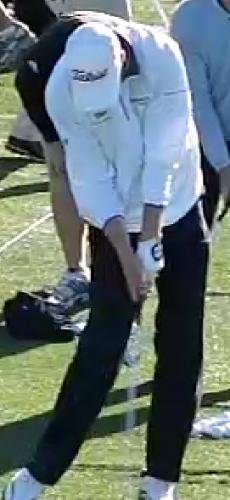
Ross Fisher
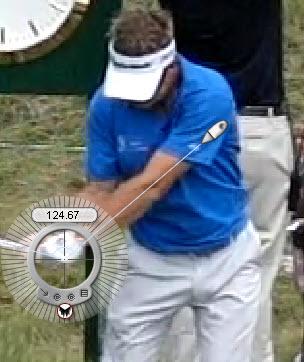
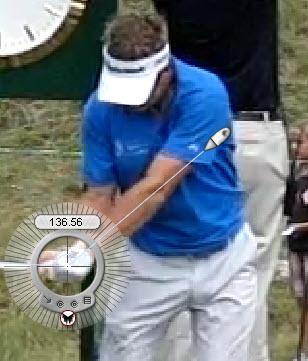
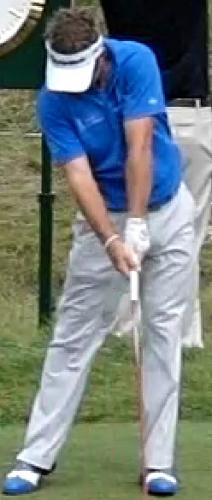
Brian Gay
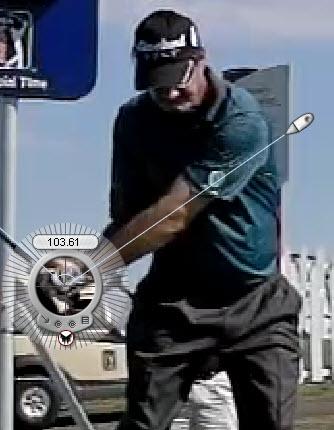
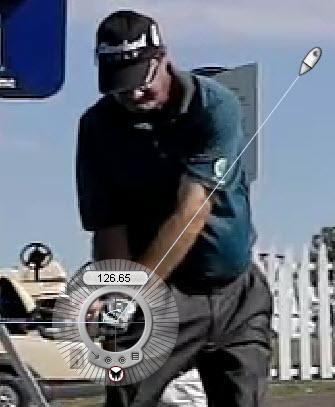
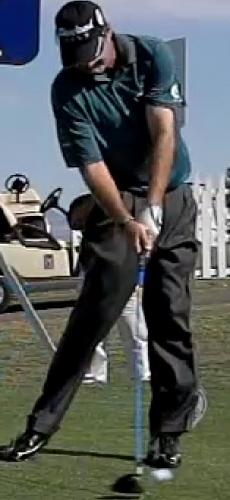
Jerry Kelly
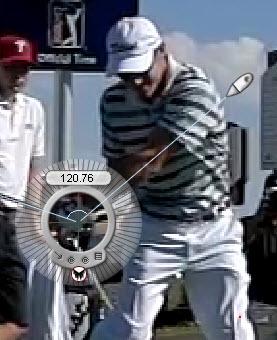
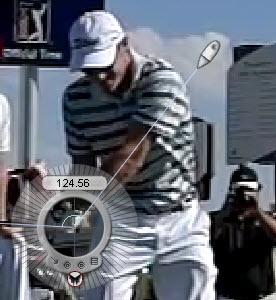
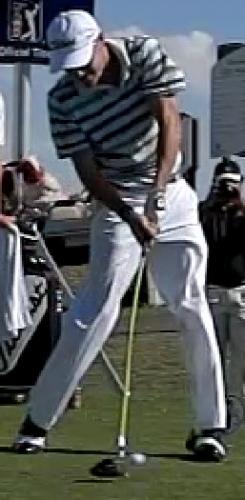
Eddie Olson
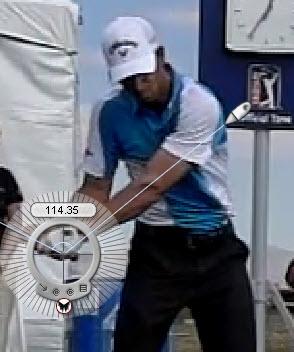
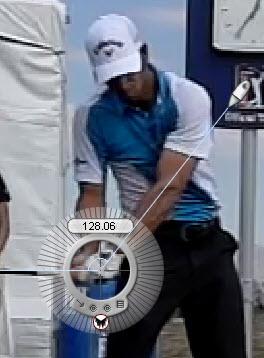
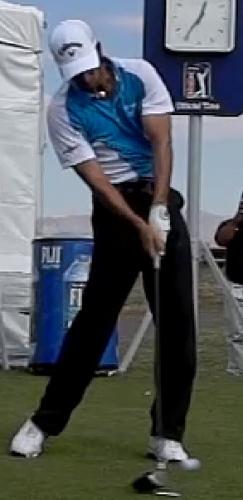
James Nitties
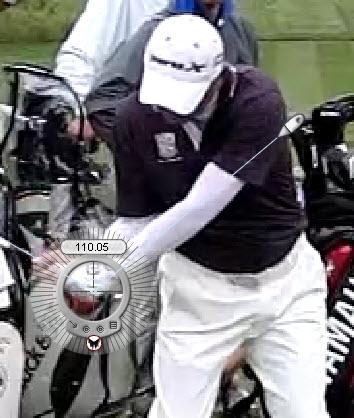
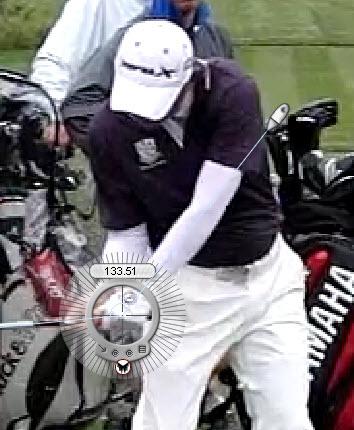
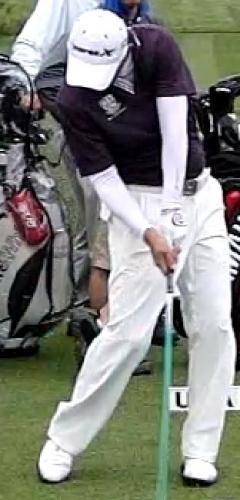
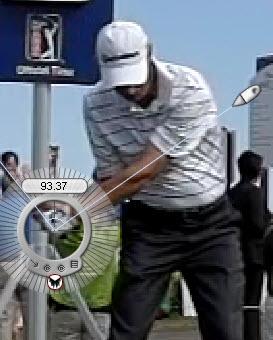
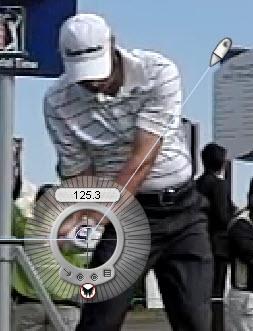
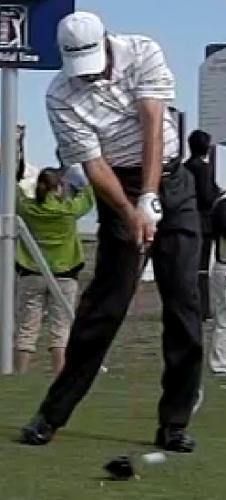
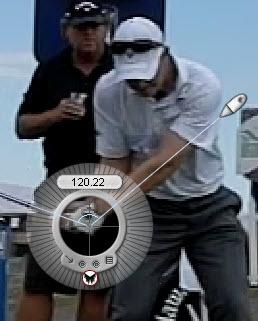
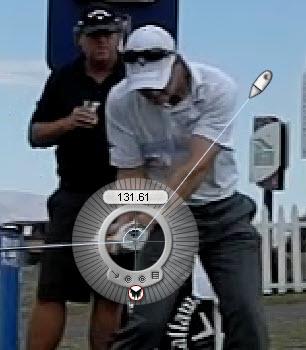
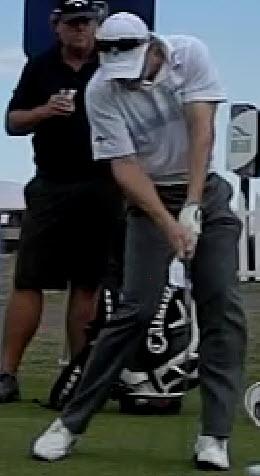
Derek Lamely
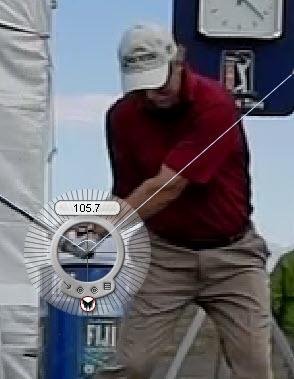
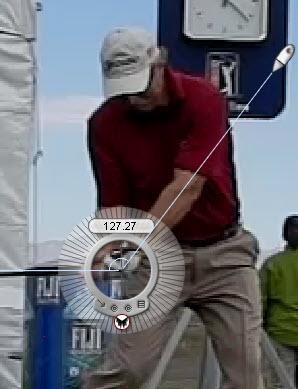
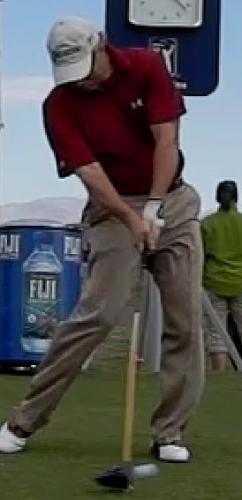
The average lag angle at LF45 for the early releasers is 101 degrees. While there still are some 2D distortions to be aware of, there is a significant difference between the extreme laggers and early releasers of about 20 degrees in terms of lag angle. So use these numbers as a general guideline to see if you’re on track or not.
Hopefully, you can see the correlation between lag retention, driving distance, flip avoidance and playing ability (world ranking). Of course there will be outliers like Lee Westwood, who was #1 in the world without holding lag. But then you’ve got to be massive like he is just to try to keep up his extreme lagging competitors who swing the club more efficiently. If not, he’d most likely wind up at the bottom of the list in driving distance statistics. Next month, I’ll complexify so that you can truly understand how to retain lag so you can hit the ball longer and better.
Also, I will show why certain teaching philosophies intentionally do not wish to have their students retain lag (and rightfully so) because doing so will magnify errors. Unfortunately, this lack of lag retention also causes a loss of speed and therefore driving distance. So it’ll be another eye-opening article and I think you’ll enjoy it.